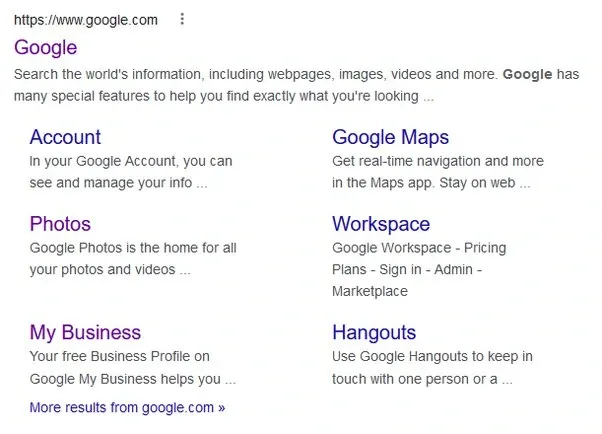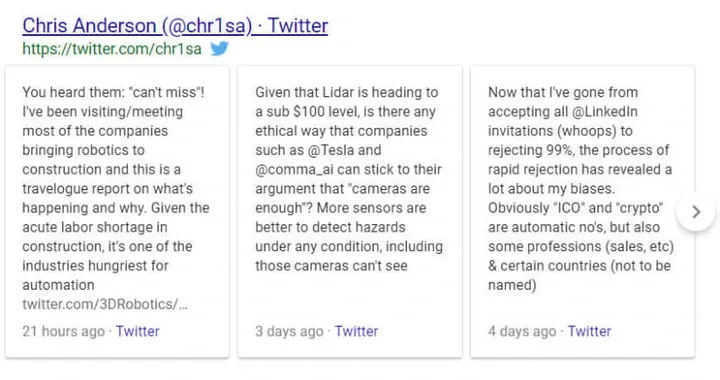 |
| 4 reasons for click-less impressions in GSC |
What influences the display of the GSC performance report? Let's look at four elements of the display that increase impressions without clicks.
A common situation is that the Google Search Console performance report shows sudden spikes in impressions with minimal click-through rate. The webmaster thinks that there is an error in the console or that the link is not clickable and tries to resolve the situation. But this is not the reason.
In fact, Google Search Console is designed like this. Let's take a look at what can increase the displays, based on Brody Clarke's material.
How Google Search Console counts impressions
Google's documentation contains a definition:
"A display means that a user has a high probability or guarantee of seeing a link to your site in search results, recommendations or news."
In the GSC performance report for search engine results, it's not just the usual blue links in the organic results that are counted. There are other items with links in the SERPs and their display also counts. However, they are much more unlikely to be clicked, hence they are displayed with few clicks.
The main reason for confusion on the part of SEOs is the impossibility to see exactly how the link was displayed.
In the "Search Appearance" filter in the console, there are types of results where you can see statistics for certain SERP features. For example, there is a FAQ block, product results, review snippets and stories. We will analyze the situations that do not appear in this report.
Why there are a lot of impressions and no clicks - 4 GSC reasons
Four elements that influence impressions, but bring hardly any clicks.
Additional internal links in the SERPs
Most commonly, additional links to related content are placed in some queries in addition to the main link. This usually occurs with the directory subsections in the online store. When these links appear in the results together with the main link, they register an additional display.
There are different types of additional organic links, the display shows a variant with internal sections:
 |
| Google SERP Additional internal links |
'Private life' and 'Books' pages will also be displayed for the query 'Biography of Cortázar'. The main link is more relevant to the query, so it usually receives all clicks.
For brand queries, the link is often accompanied by an additional list of other URLs. This can have a noticeable effect on the number of impressions if the brand name is used frequently in search queries.
For example, this is what it looks like in the SGC when an "About Us" page receives additional links to the main result for a brand query
Images in the main result
 |
| Images in the main result SERP |
For some queries, images appear not only in the Images tab but also in the main SERP. Images appearing in this block will have counted views, with probably a few clicks.
The appearance of images in the main SERP will affect performance reports under the "Internet" search type filter, and not only under the "Image" search type, which is reserved for Google Images tab data.
To give another example, an image of a website kept appearing in the output of several countries, this is how it appeared in the GSC:
This image consistently gets visits, but out of almost 70k visits it only had 9 clicks. And this is generally normal, it's just the way Google Console counts are displayed. If there are a lot of images in your output that end up in a block like this, don't count the CTR.
Images in knowledge panels
Knowledge panels are advanced snippets with images and text, usually indicating what or who the user is looking for in a query. Images in knowledge panels can also cause a spike in impressions. As in the previous point, all image impressions, and more specifically the URL where the image is located, are collected in a performance report in the QMS.
Example: Images of a site have been placed in knowledge panels for a long time. The data is spread over 13 URLs, but is heavily concentrated on the first two, which have a stronger position in the panel.
Knowledge panels have a very low CTR, the user sees the answer to the question and does not need to go to the site in most cases. This can confuse website owners if they don't understand where the visibility is coming from. In the example above, the images got 671k impressions and only 17 clicks in the last 16 months.
Links in tweet carousels
Links in tweet carousels are probably the most difficult source of impressions to detect, with very low or no click-through rates.
For some queries, such as those related to the branding of a company active on Twitter, a tweet carousel may appear in the output. If there is a link visible in the output in the tweets, it is possible to receive impressions that will appear in the GSC.
If Search Engine Land shares the link in a tweet and the user sees the carousel of tweets in the results and clicks on the link directly from the search engine, an example and click will appear in Google Search Console. Brody Clarke confirmed this with research on the effect of tweet carousels on GSC screens. Users rarely click on such links from tweets, so the views will be mostly unclicked. But this situation in general is rare. Carousels of tweets appear infrequently.
Unclicked visualization spikes in Google Search Console can be confusing if one does not know the impact of certain SERP features on visualizations. We examined four situations where the impact is not obvious.
As a reminder, you can check the status of your site on our website: traffic, link profile, speed, technical and other metrics. If you connect Analytics, you will be able to view all the data in one interface.
If you would like to add something or rate the material, please write a comment.
Tags:
seo



